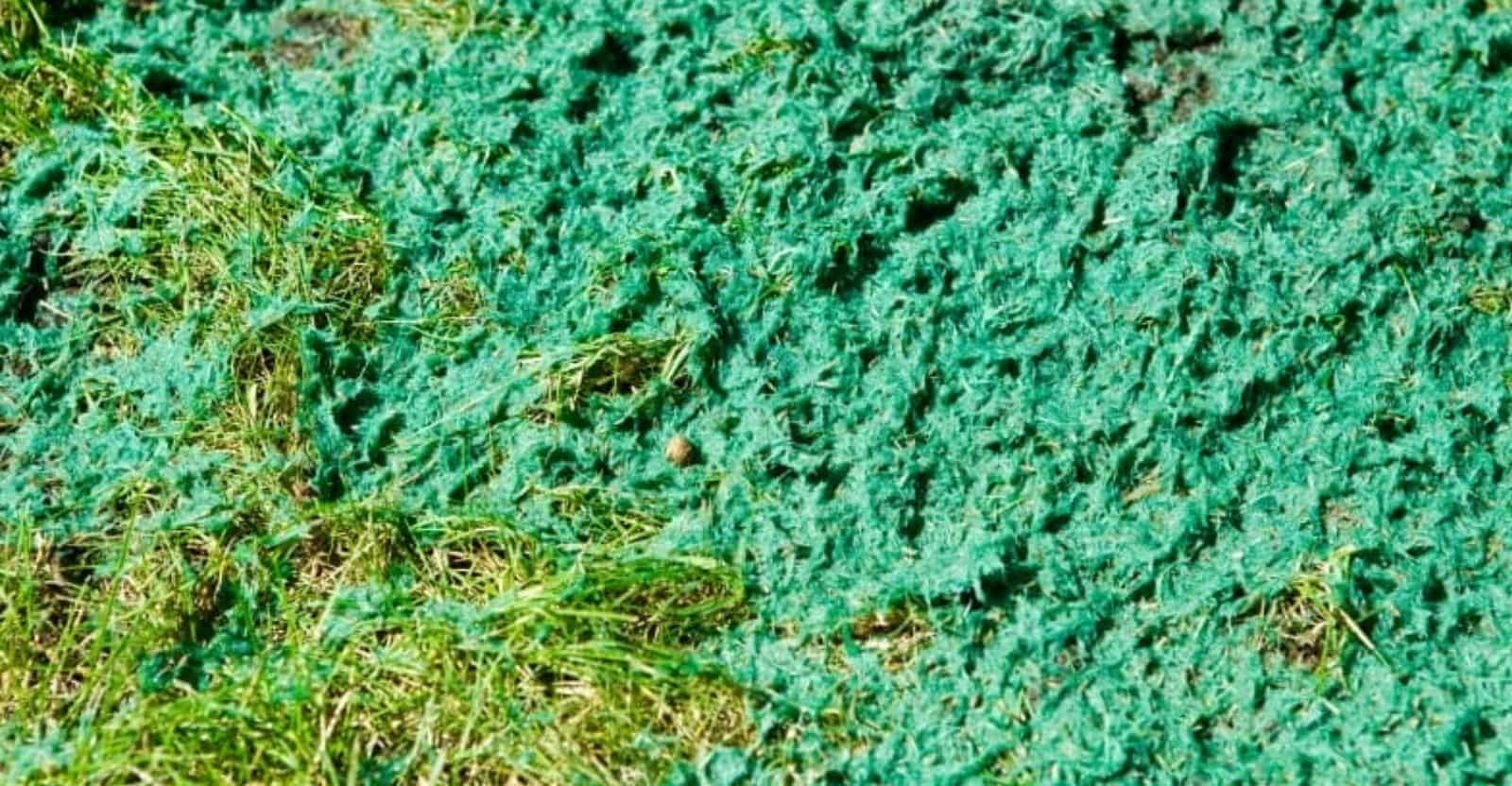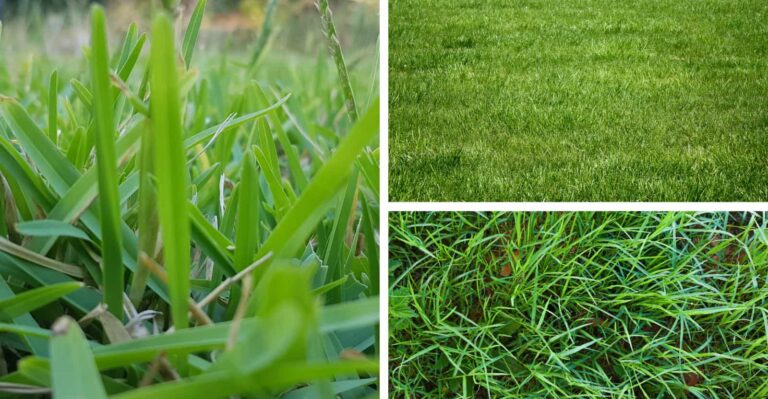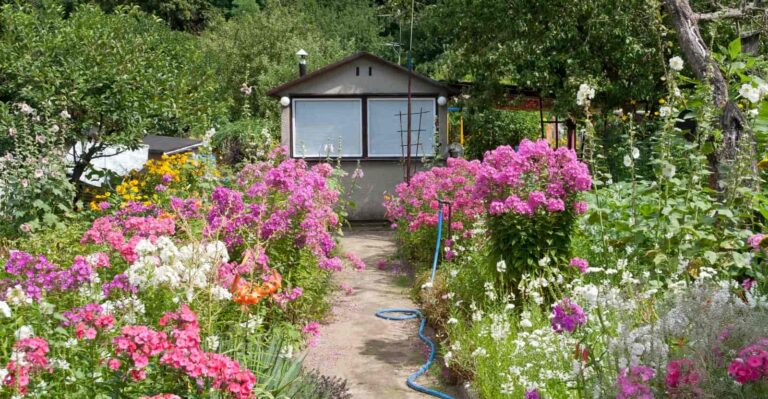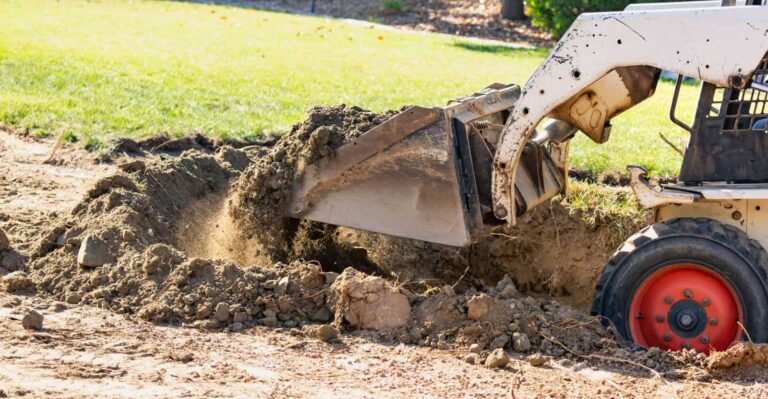Amazon has put together some great Home Gift Deals – save money and get your shopping done at the comfort of your home! Click here to see deals on Amazon
Hydroseeding is a great way to have a seamless, beautiful lawn for your residential property or new development. Traditional grass installation methods, such as sodding or dry sowing, are often cumbersome and expensive.
Moreover, there is no guarantee that you will get healthier and thicker root growth with traditional grass growing methods. This process shines and is suitable for residential yards, new housing developments, golf courses, and alongside highways or roadside grass.
In this post, we had covered this topic in-depth and things to consider when getting started.

What is a hydroseeding process?
The hydroseeding process is used to establish grass over large and uneven areas such as hills and slopes. It’s a quick and easy way to plant grass that would otherwise take several hours or days to complete the job.
In the hydroseeding process, a mixture of grass seed, water, fertilizer, mulch, green dye, and biostimulant is prepared. It’s then filled in a tanker mounted on a tractor or trailer.
It’s continuously mixed up to keep uniform distribution and prevent any settlement before the spraying happens. The growing area is marked, and the slurry is sprinkled evenly through a hose and nozzle.
For extensive area coverage, after wildfire or drought, the slurry is transported in aircraft with a tank underneath it, spraying it on the ground below.
Hydroseeding is a cheap and effective way to add grass in a mostly inaccessible area. Here is a short hydroseeding video.
Note:
The purpose of green dye is to indicate where you have sprayed and the area that needs to be further covered.
What are the pros and cons of hydroseeding?
Hydroseeding isn’t a new technique as it has been present since 1940 when it started in the United States to help control soil erosion around the road steep grades.
It was challenging and cumbersome to have grass in these areas using a traditional grass seed or sod approach.
It’s prevalent these days and extensively used for both residential and business landscaping. Here are the advantages of hydroseeding:
- It takes less time to plant grass for a large area than traditional methods
- The soil erosion control method is a far cheaper option than planting sod and reduces dust pollution
- It’s highly effective and easy to apply over steep gradients or loose soils
- There are many options to create different mixtures of seeds
- This is a cost-effective seeding method as it cost 50% – 80% less than sodding the ground. The cost savings are primarily due to lower labor costs
- Revitalize the yard without needing expensive machinery or workforce
- Helps grow thicker and sturdier turfs due to the inclusion of moisture-retaining mulch in the slurry
- Improved disease resistance due to lower soil disturbance
Here are some disadvantages of hydroseeding:
- You won’t get instant lawn as you get putting sod lawn in your yard. It takes time to grow
- The slurry has to be mixed appropriately to have a uniform distribution of grass seeds
- It requires frequent irrigation to help establish grassroots
- Need to prepare loose soil surface to assist seed germination
- It’s a slow process and needs care and patience over 3-4 weeks to ensure the lawn gets established
Those are some hydroseeding pros and cons to consider. You can decide if this is the right process to go for your yard.
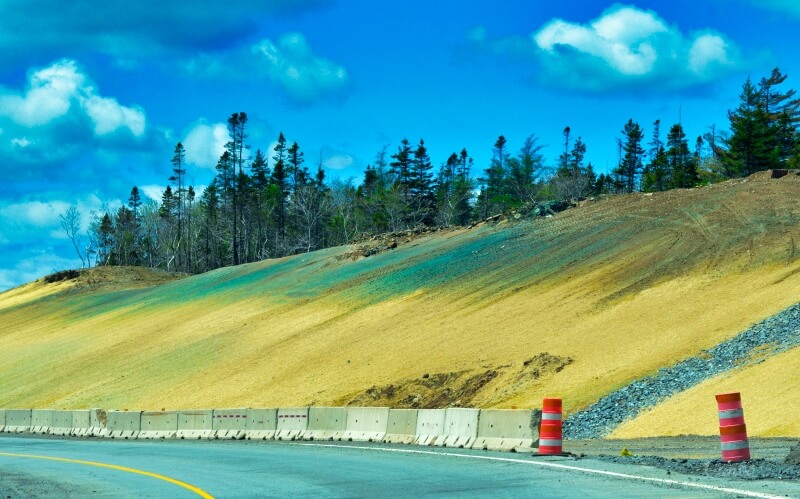
What is the best time of year to hydroseed?
The best time to hydroseed is during the late spring to early summer (April – July). During this time, the grass seeds have a fast germination rate and quickly establish roots.
If you’re seeding in hot and dry areas, you should prepare the ground by spraying water over the ground surface. This helps improve moisture levels in the soil and lowers the soil temperature for spraying.
What kind of grass seed is used in hydroseeding?
Hydroseeding effectiveness depends on the climate condition and the soil type. Often, it’s a far better option than traditional seeding due to hydroseeding’s fast germination rate. Remember that not all grass types are suitable for hydroseeding.
Grass varieties such as Bermuda, Zoysia, Fescue, and Buffalo are the most common grass seeds used in hydroseeding. Before starting the seeding, you must prepare the ground by removing debris, clearing weeds, and tilling the soil to loosen it.
Don’t forget to moisten it properly, so grass seeds start the germination process and grow quickly.
How do you treat hydroseed grass?
After hydroseeding your grass, it’s crucial to treat it with care to grow grass fully. You can follow the steps below to prepare and take care of ground covered grass:
Soil preparation
The soil has to be free of dirt, and weeds have to be removed. You can use a weed removal machine and tiller to get the ground loose and clean.
Remove any rocks or debris from the yard as it may interfere with the grassroots growth.
Water
It’s vital that you properly water the lawn after hydroseeding. After you have applied the hydroseeding slur, wait for a day to allow the mulch to get dry before you start the regular water schedule.
When watering, you aim to keep the ground moist to help speed the germination process. Don’t overwater it as it may risk the seed rotting or washing away.
Water in small incremental steps of 10 to 20 minutes 3 to 4 times on hot days or 1 to 2 times in mild climates. After three months, you can reduce the watering schedule to every other day in the early morning.
You shouldn’t water at daytime or night when the temperature is above 85 degrees Fahrenheit. It increases the risk of the growth of the root fungus that could kill the grass.
Fertilizer
You can start a regular fertilization schedule after 80-90 days. Make sure the fertilizer has a high nitrogen concentration.
Disease control
You should use herbicides or pesticides if there is an indication that grass is getting infected. Don’t apply these chemicals in the early germination stage as it may kill the grass seeds.
Usually, it’s safe to wait at least 90-100 days before you start to apply herbicides or pesticides to your lawn. Also, make sure that the yard remains free from weeds.
If you see any weed growth during the first 90 days, you can use mechanical weed remover to pull it out from the ground without destroying surrounding grass.
Keep low foot traffic
During the first two to three weeks, don’t walk on the grass. It may cause excessive compression to the soil that hinders root growth. Also, keep pets away so they don’t dig up the ground, and you will have bald patches in your yard.
Can you hydroseed over the existing lawn or dead grass?
Hydroseeding is a great way to rejuvenate your lawn without needing much effort. You can hydroseed on top of existing lawns or dead grass, but you should mow the area first and remove any debris from the yard.
You don’t need to till the yard to do the process. However, you may have to do the necessary preparatory work for better success and develop a good-looking lawn.
For example, ensure that the solution contains a thinner mulch mixture when it has to be used over an existing lawn. This is because the grown grass supplements the moisture needed for growth. The leaner mulch mixture won’t smother the existing grass.
How long after hydroseeding can you fertilize?
Hydroseeding slurry contains fertilizers with high phosphorous content to help with root growth.
You can start regular fertilization after 10-12 weeks to provide an extra growth boost. You can add 1 pound of nitrogen fertilizers per 1,000 sq feet area.
Depending on the overall soil condition, you may add soil amendments or chemicals to improve the pH and soil health.
You can also increase the mulch ratio to protect the seed and retain moisture in the soil. Wood and paper mixture is the most commonly used mulch ingredient.
How long can hydroseed go without water?
The grass seeds need water to germinate. You should water before and after going through the seeding process. The grass seeds won’t grow until it gets water and the moisture level in the soil increases.
Once the germination process starts, you shouldn’t stop the regular watering schedule. Otherwise, the seeds will dry and die.
You have to regularly water the area three to four times a day for at least 2 weeks before the grassroots are strong enough to dig deeper into the ground.
To answer the question, how long can hydroseed go without water, the answer isn’t more than a day. Anything more than that, you risk killing grass seeds, especially if it’s a hot day.
You have to water the seeded area lightly for three to four weeks over a period of time to keep the ground uniformly moist. Also, avoid excessive watering. It may cause the seed and fertilizers to get washed away.
You can reduce the water frequency as the grass starts to grow after 2 weeks. You can install a sprinkler system that makes the watering process easier.
When can you walk on a hydroseed lawn?
A hydroseeded lawn usually takes anywhere from three to four weeks to get fully established and long enough to get ready to be mowed. But this doesn’t mean that it’s prepared for any heavier foot traffic.
You should keep a low foot traffic flow for the next 3 – 4 months and give the proper care to get it fully established. It may take anywhere 8 to 12 months for the roots to be strong enough to get firmly established in the ground and become ready for average to high traffic.
How much does it cost to hydroseed a lawn?
The hydroseeding cost depends on the area and grass that you’re planning to seed. Most contractors usually charge anywhere from $0.08 to $0.22 per square foot. The price may vary depending on how big the yard size you have and the accessibility.
You may negotiate with your contractor depending on if you have other projects that they can handle together for lawn care. Most people with small to medium-sized yards can expect to pay anywhere from $800 to $4,000 for 5,000 sq to 10,000 sq foot yards.
For a 1/4-acre yard, you can expect to spend $1,500 to $2,000. These costs exclude water or fertilization costs that you can expect to pay up to $200 for each process.
The smaller yard less than 500 sq feet can be charged at the hourly rate of $25 to $30 per hour. If you want to DIY hydroseeding, you can buy spray mixture from Home Depot or other retailers for $25 to $80 per gallon.
You can either rent or buy hydroseeding equipment depending on your needs. If you have never done seeding before, it will be better to hire a professional company to do it the right way.
Most professional companies will guarantee the result. They also have value-added services such as tearing out old lawns, fertilizing, lawn restoration, and touch-up on problem areas.
Conclusion
Now that you know more about hydroseeding for lawn care and erosion control including what is required to become successful in it. You can decide whether it’s right for your yard or go for the traditional dry seed method.
Having a lush green yard is appealing and can be a satisfying DIY project for lawn care. Regardless of your needs, whether it’s reclaiming dull and patchy lawn or controlling the soil erosion by wind or water, it’s a great way to keep the underneath soil healthy.
It’s also a cheaper option compared to installing and maintaining sod.
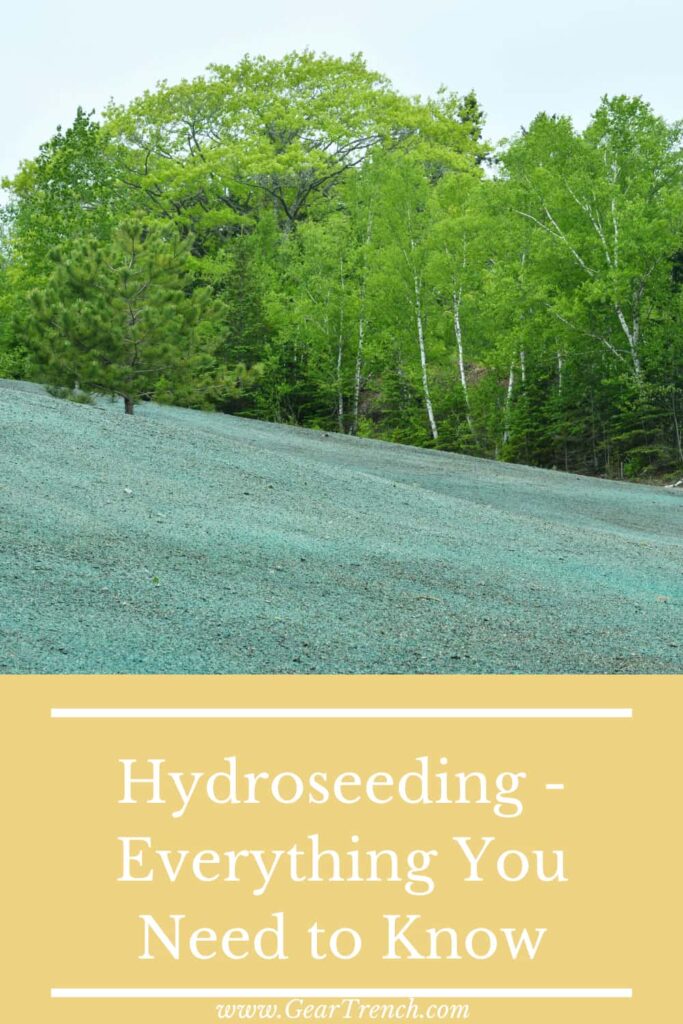
Don’t forget to share this post

